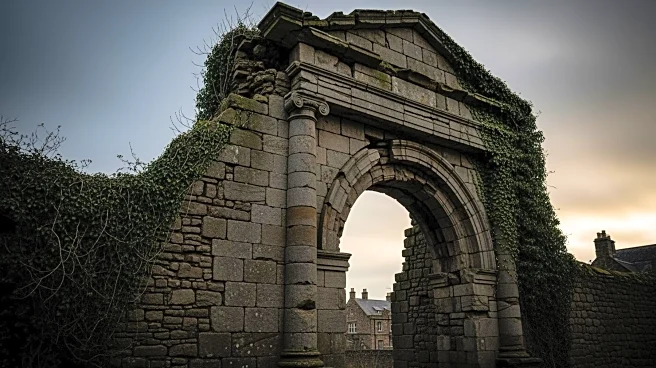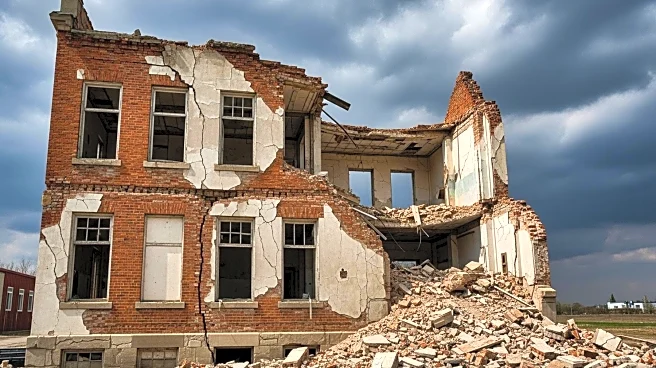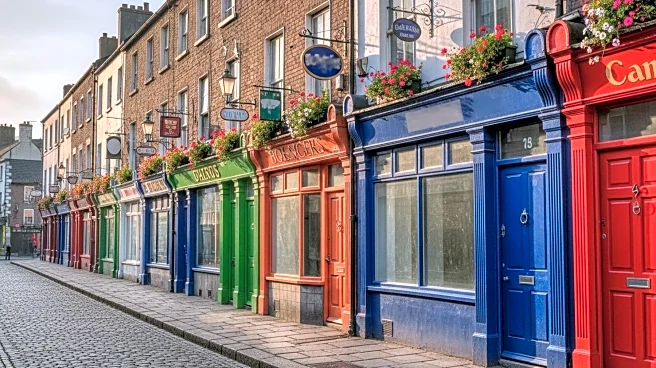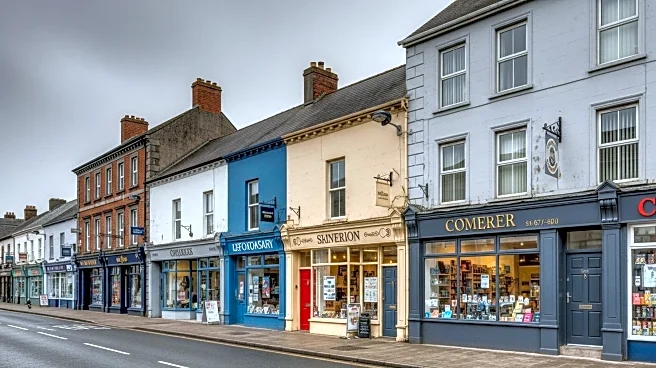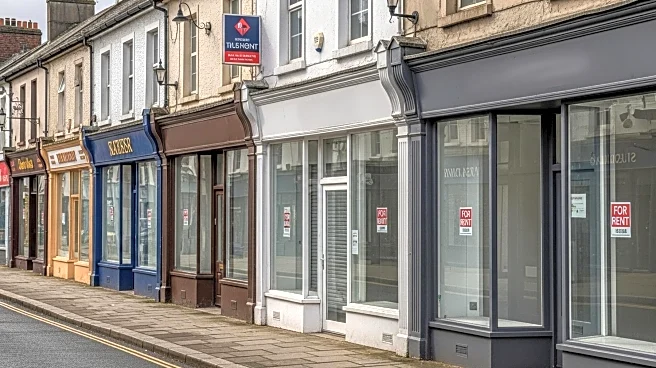What's Happening?
A historic building in Londonderry, known as the former Convent of Mercy on Pump Street, is facing a 'clear and immediate danger to life' following damage from Storm Amy. The Georgian listed building,
dating back to the early 1800s, was already in disrepair before the storm exacerbated its condition. Structural engineers have confirmed the building is in a 'state of imminent collapse,' prompting a planning application for demolition by the Martin Property Group, the building's owner. Discussions are ongoing to determine the best course of action, with public safety being the primary concern. The building's precarious state has led to partial street closures, affecting local businesses.
Why It's Important?
The potential demolition of the Convent of Mercy highlights the challenges of preserving historical architecture while ensuring public safety. The building's collapse could result in the loss of cultural heritage, as noted by John Anderson from the Ulster Architectural Heritage Society. The situation underscores the importance of maintaining and protecting historical structures before they reach critical conditions. Additionally, the partial street closure has negatively impacted local traders, emphasizing the economic repercussions of such emergencies. Balancing heritage preservation with safety and economic stability is a complex issue facing many communities.
What's Next?
The Derry City and Strabane District Council is in discussions with the building's owner to find a solution that addresses both safety concerns and heritage preservation. The Department for Communities' historic environment division supports careful dismantling of parts of the building to mitigate risks. The outcome of these discussions will determine whether the building can be saved or if demolition is inevitable. Local traders are seeking support to mitigate business losses due to the street closure, and further decisions will impact the community's economic recovery.
Beyond the Headlines
The situation raises questions about the long-term management of historical buildings and the resources allocated for their upkeep. It also highlights the potential for increased scrutiny on property owners regarding the maintenance of at-risk structures. The incident may prompt policy discussions on heritage conservation and emergency preparedness in the face of natural disasters.
